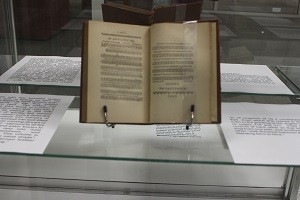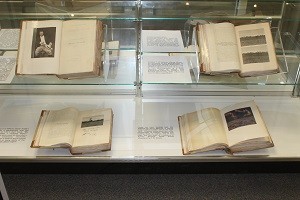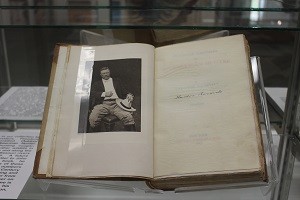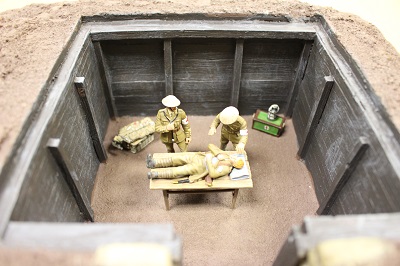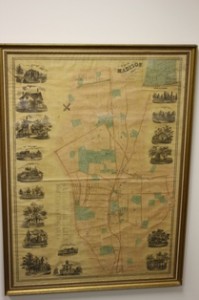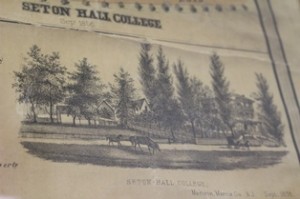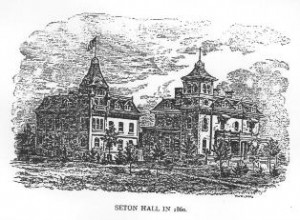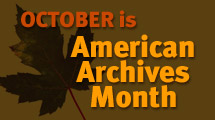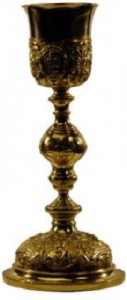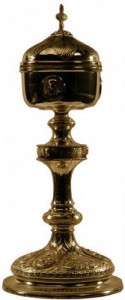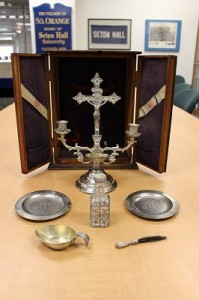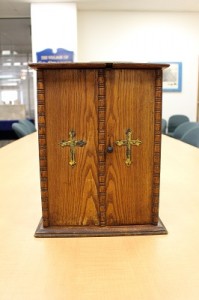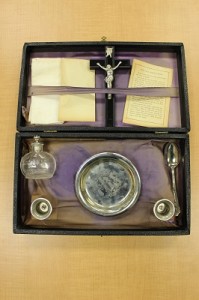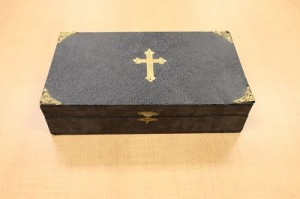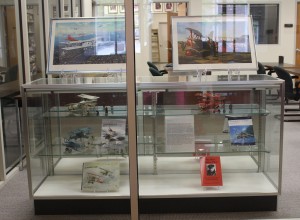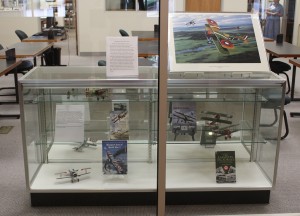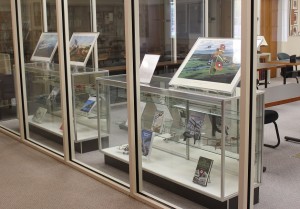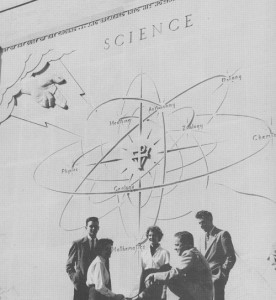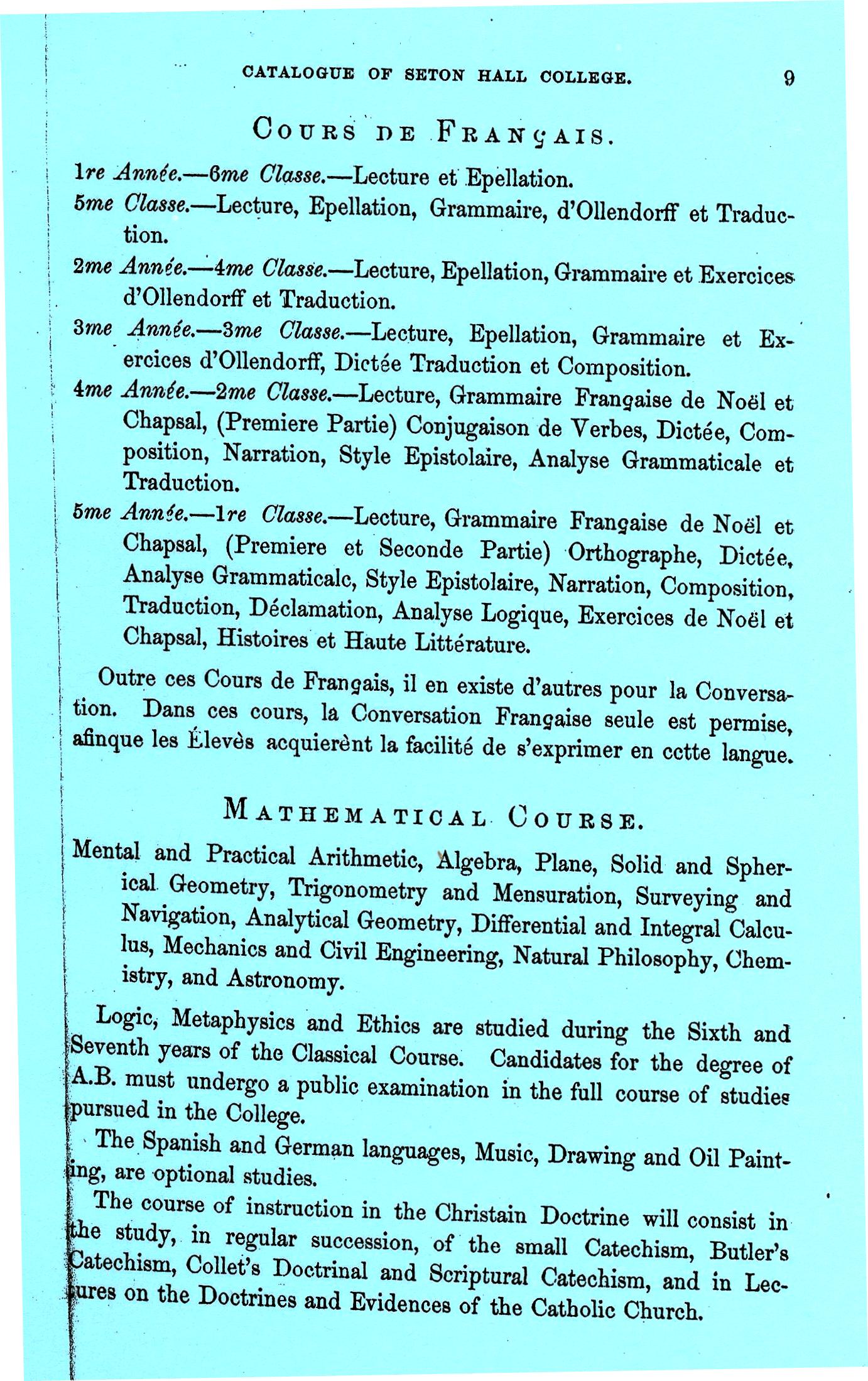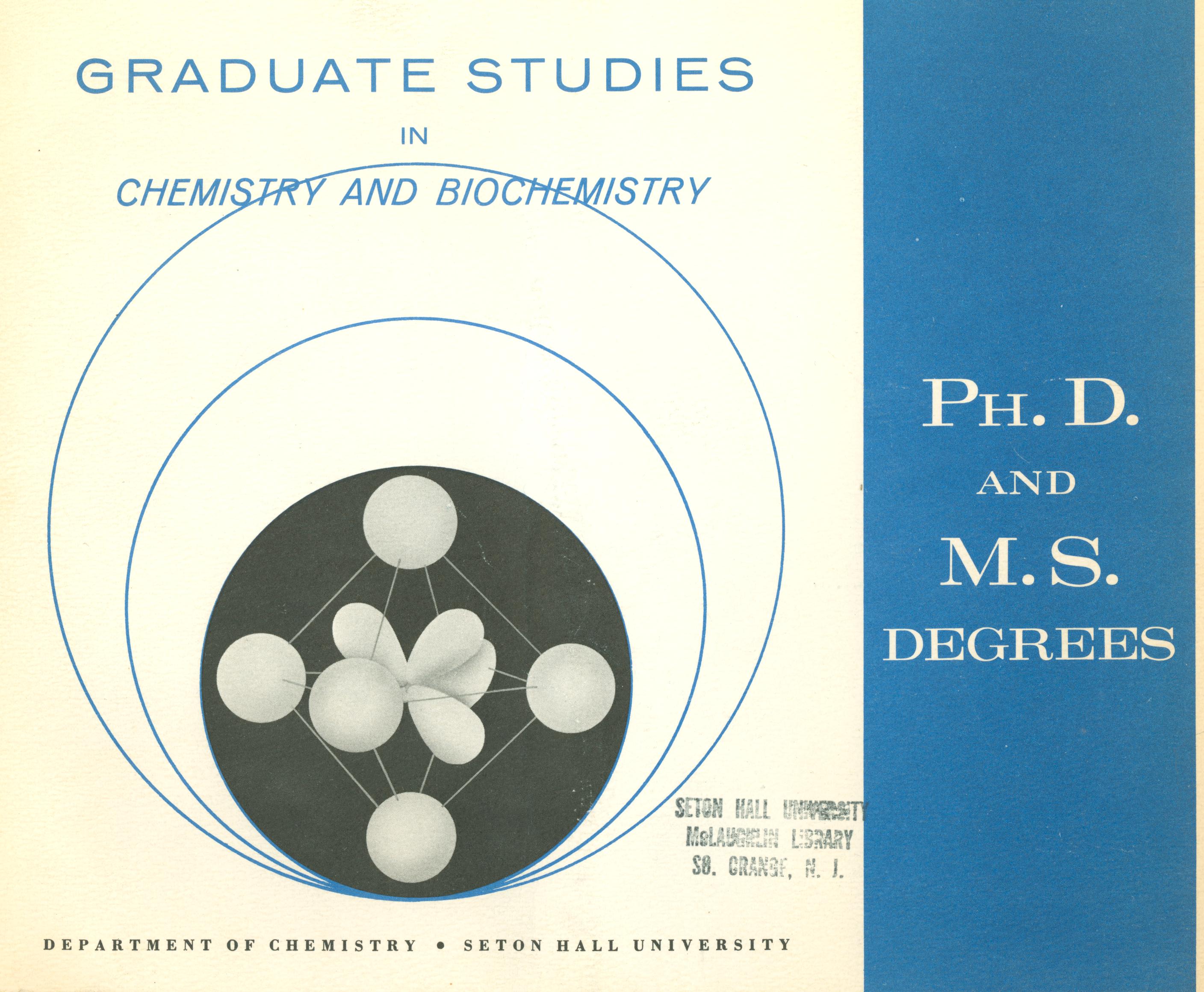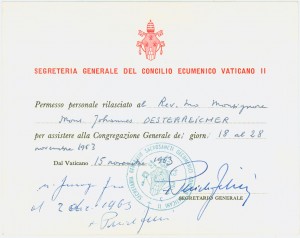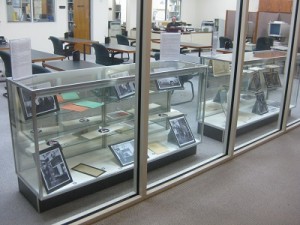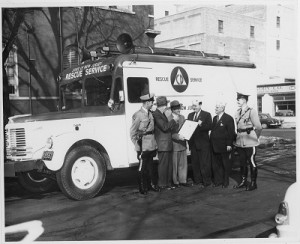The Msgr. William Noé Field Archives and Special Collections Center, Walsh Library ground floor houses rare books that deal in particular subject areas. This is a small collection dealing with outdoor activities of fishing and hunting. These books are special in many ways from the beautiful leather bindings in some cases, to the signatures of the authors in others.
To begin with two beautiful leather volumes, both on fishing, we have The Compleat Angler by Izaak Watson, an 1876 fac-simile reprint of the first edition published in 1653. The preface says that “This was a book not to be placed in the safe companionship of worthy but unread books…” Rather, it was well used in stream and pond, necessitating this fac-simile reprinting. This volume is printed on “paper of the same shade”, and bound in the same brown leather with “red and blue sprinkling.” It is open to the Angler’s Song on pages 216 and 217. They are the reverse of each other so that one could sing from one side, and another from the other “with the book between them while standing face to face.”
The other leather bound book, Salmon Fishing on the Grand Cascapedia by Edmund W. Davis, number 7 of 100, was printed for private distribution in 1904 on Imperial Japan paper and sports an emerald silk fly leaf and gold embossed tooling inside the cover board.
Woodcock Shooting by Edmund Davis, number 99 of 100, was printed for private distribution in 1908. It features numerous photographs of peaceful-looking woods where the woodcock can be found, and more numerous shots of bird dogs as well as a lovely engraving of a Woodcock and Young.
The remaining books in this tiny special collection are limited editions dealing with hunting. Three are by Theodore Roosevelt, and two are signed by him.
His Outdoor Pastimes of an American Hunter, 1905, recounts hunting cougar, bear, antelope and other wildlife in Colorado, the Rockies and along the Mississippi and Little Missouri rivers between 1901and 1905. A future conservationist whose letter to John Burroughs opens this book, he carefully notes the ranges of these animals and their reduced numbers from the latter part of the 19th Century when he spent 2 years ranching and hunting in S. Dakota to recover from the deaths of his wife and mother on the same day in 1884. The volume is open to a photo of T.R. with his signature on this limited edition, number 222 of 260.
African Game Trails, An Account of the Wanderings of an American Hunter-Naturalist by Theodore Roosevelt is number 399 of 500 published in 1910. Volume II of African Game Trails is open to a photograph with the legend in T.R.’s own hand, “My boma when I camped alone.” Boma is a term used to describe a livestock enclosure, stockade, small fort or a district government office used in many parts of the African Great Lakes region.
Finally we have Hunting with the Eskimos by Harry Whitney, a signed limited edition number 141 of 150 from 1910. It boasts many black and white photographs of Eskimo, whaling and hunting musk ox and walrus, and of sled dogs, and is open to a plate of a painting of Aurora Borealis, Smith Sound, Greenland by F. W. Stokes.
This exhibit can be viewed from the hallway between the Walsh Gallery and Msgr. William Noé Field Archives and Special Collections Center during any hour the Library is open. It will run through May 20, 2015.
